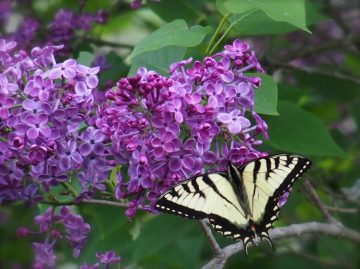My encounter with the divine feminine began in dreams, when I was a teen; yet, a sense of Her was there before, in the love of my mother and the lyrics of my favorite Primary song: “our lilac tree” and “butterfly wings” and “the magical sound of things,” resonated Her presence.My first dream of Her came in 1972; a female figure led me to our Chapel, where a crystal bowl of pristine water waited on the sacrament table, for me to partake. Before I could drink, two sisters in the ward began adding ingredients to the water to make a cake. I awoke dismayed. She appeared in another dream or two, but I didn’t know Her name.
In 1976, I unconsciously engaged Her at college, by writing about female concerns on campus, and co-chairing the women’s conference, themed “Woman Clothed With The Sun.” I was doing female theology without knowing it.
I first spoke of Her in 1982 at the Seventh East Press. I wanted to publish the poem, “The Motherless House,” but I had to wait 10 years. She was barely surfacing then, in work by Carol Lynn Pearson (1970s), Linda Wilcox (1980), the Exponent II (1980s), and private discussions by Martha Pierce and Julie Nichols.
In 1987, She appeared as a waking dream, a vision of the World Soul, who spoke: “There is a great need in women, to know me.” I agreed. She embodied the spiritual, archetypal power of the feminine within the psyche or soul, and its need to be known, integrated, on a personal level, and on social, institutional levels.After the dream, I began asking others about Her. In 1988, I surveyed women at feminist events, hoping for replies. When some came back, it was a good sign. I proposed a book about feminist theology, accepted in 1989 as Women and Authority.
In 1990, I wrote about the divine feminine in the MWF Quarterly, to create a public space for personal experiences of Her. I called it, “Emerging Mormon Thea-logy.” Women faced real fears to share feelings about the Mother, but stories filtered into my files. I spoke at the Forum on “Our Mother, the Medusa” comparing our fears of the Mother to the myth of Medusa.In 1991, I presented a paper, “Toward a Mormon Feminist Theology” – a public call for formal development of our female theology latent within Mormon tradition. It was a Sunstone symposium on the “State of Mormon Theology,” and the attendance overflowed, so they moved our session outdoors. It was a watershed moment.
In 1992, I asked a hundred Mormons if they would share their experience of Her, in print. They loved talking about Her, but not in public. Fifty women and men gave permission to publish their views as Chapter 12, “Emerging Discourse on the Divine Feminine.” I wrote: “The following statements represent only a few of the many personal experiences relating to female deity in contemporary Mormonism. They encourage further survey and formulation, and suggest that larger works devoted to feminist theology and personal discourse on God the Mother are long overdue.”I also discussed Her in my “Preface” and “Introduction” saying, “Theology, or simply the way we view God and our relationship to God, is the foundation of our religion. Feminine deity is implicit in Mormon theology. Feminist theology is revisionist theology because it reveals the feminine in our view of God and priesthood.”
In 1993, She returned in my dreams as Sophia, who comforted me through a year of ecclesiastical interviews from February to September. Her guidance also led me to Gnostic Christian traditions in 1996, and into a path of healing and ministry. Her presence in my life showed me Her presence in religion.
In 1996, I found Her in the Nauvoo temple, as I researched historic sources for the restoration of an original Sunstone, sculpted by my friend Ben. Her presence was embedded in the pillars of the Temple, and its Sunstones and Moonstones. I liked the Moonstone as a symbol for the hidden, repressed aspect of Her, the latent feminine. I explored this in papers and media for a decade.From 1999-2011, I wrote liturgies and music for the sacred feminine, while serving in interfaith ministry. I also sponsored an annual Sophia Season celebrating the feminine in religion and culture, with speakers, film, art. And I wrote about feminist theology in a few books.
Since my return to the LDS Church in 2012, I have found Her in LDS scripture and theology, lessons and publications, churches and temples. I hear Her in the voices of Mormon women and men. I speak about Her in papers and podcasts.
In May 2015, I shared a hundred slides of the sacred feminine with a hundred women, images of Her in this world. That week, a BYU student exhibit on the Mother in Heaven used three quotes from Women and Authority.
What began as a dream in 1972 and a vision in 1987, later became tangible in topic and text, language and liturgy, church and community. For 33 years, I’ve sought Her in private and print, in chapels and colleges, in other peoples’ visions and views, and topics from the Mother God to Mormon ministry, Mary to Magdalene, Holy Sophia to Holy Days, the Divine Feminine to Da Vinci Code.
She was there long before I knew Her, before I could even conceive of Her. And She abides with us today, whether we see Her or not. She simply IS, so She waits, to be seen and known.







13 Responses
Thank you for sharing your beautiful testimony.
Thanks April, and thank you for all of your work, as well.
I drafted this piece on Mother’s Day and emailed it on Memorial Day, but it failed to transmit, stayed in my drafts box. I found it last week and resubmitted it.
EXII was kind enough to use it anyway, in June. 😉
perhaps a sign that we still need to think about the Mother, for Father’s Day.
I think celebrating the Mother for father’s day is the best BEST idea I have heard in a very, very long time. Brilliant!
This is powerful and lovely. I was told all of the standard responses when I was growing up about why we don’t talk about Her, but I still prayed to her. It was at University when an Institute teacher told me that praying to Her was wrong. Praying to the Father, he reasoned, meant we were praying to both– we just used His name. I felt like I had sinned against Them, and separated myself from Her– thinking that it was a sin to try to speak to Her. I still have trouble with this, and have grown apathetic to seeing God in general- I even question the concept of eternal gender. So it struck me most when I read your last sentences: “She simply IS, so She waits, to be seen and known.”
I think knowing Her could answer many questions for us all. And I love how you have worked fastidiously to develop the desire of seeking Her.
Thank you so much for this post!
Thank you Spunky, for your feedback and sharing some of your struggle.
I feel so sad about all the ways you were shut down over the years, and for the ways that we all have been shut down over the years. After a lifetime of being thwarted, at some point we simply give up, and a part of our soul feels like it dies. Somehow, we can’t let that happen, we have to find ways to keep our spiritual life vibrant.
I have questioned, explored, deconstructed, theorized gender since the 1980s, and I continually find, at every phase of my journey, that I still need the archetypal feminine / female divine, along with post-gendered aspects of spirituality and divinity, to address the needs of my full being.
Thanks, Maxine for sharing the lovely imagery with us. You and your writings were very influential for me in my quests for the Divine mother as well and I have found her to be every bit as present and generous in revelations and visions of herself as you describe. What a gift!
Thank you Violadiva. I’m so grateful if any of my efforts have been helpful to you in your searching and journey. Your own experiences sound quite intriguing and inspiring as well, I would love to hear about them.
Somehow the most hopeful thing about this story to me is that quotes from Women in Authority are used in an art exhibit at BYU. Words that once marked their author as apostate are now writ large in church sanctioned space. Not for the last time, I predict.
I sometimes feel ambivalent, even resentful, at a Mother God who would allow herself to be forgotten and invisible. Why no burning bush for her? No conversation with Adam and Eve in the Garden? No appearance to Joseph Smith? Your slide presentation, which I was so fortunate to see, implies that She must have revealed herself at some point to be present in ancient and not-so-ancient artwork, and that human editing wrote Her out of sacred texts. Sometimes I want to be a part of the difficult work of bringing Her back to public worship. But more often I feel energized by the post-gendered aspects of spirituality. I can’t think of a godly attribute that is gendered, and I feel only a stupor when I try to imagine how gender matters to our eternal selves. But I also fundamentally believe in dualism, and a genderless trinity doesn’t have that tension inherent to it that a heterosexual couple does. Which brings me to my other real problem with Mormon teachings about gender, which is that if our highest belief is in exaltation of heterosexual couples, what about God’s homosexual children? Maybe no marriage in eternity makes more sense. I think Occam, who said the simplest answer is often correct, would have agreed. All this is to say I feel only muddled about all of this, and quite disgusted with the unexamined certainty with which these things are discussed at church.
“I can’t think of a godly attribute that is gendered, and I feel only a stupor when I try to imagine how gender matters to our eternal selves.”
Spot on, Emily U.! I love this point. I agree.
Thank you for your deepening feelings and thoughts Emily. Yes, She’s often hidden or obscured, yet still there. She persists, like the need for gendered and ungendered spirituality. They simply are. To reclaim both is to value the gendered and ungendered aspects of our own being. Valuing the sacred feminine in spirituality values the female in society –in body and psyche.
I didn’t author the 3 quotes used in Katie’s exhibit, I compiled/edited W&A, but those 3 specific quotes are from Carol Lynn and Margaret. However, I felt exactly as you describe — hopeful and encouraged to see words formerly feared as heretical now openly used in church-owned spaces. This has been happening in many ways –incl. discussion of the Mother in BYU Studies, images of the sacred feminine in the LDS Conference Center, the Nauvoo R.S. minutes published on the Church web site, theological explorations published by Deseret Book, references to the Mother in Church meetings and talks; even my own return to the Church. I feel encouraged by steady progress and healing, in spite of recent conflicts and disciplines, which hurt us all.
Meanwhile, She is present in LDS religion and culture, but in need of conscious recognition and integration. This is a developmental process, allowing a marriage of opposites, or paradox. This blends the binary, deconstructs the inequality assigned to dual terms; otherwise, one term remains privileged, the other silenced. Integration or paradox owns both, thus reveals an equality that transcends duality. Equality transcends image, identity, while duality exists as symbol, image, identity. So, gendered spirituality co-exists in tension with ungendered spirituality.
Yes, duality has an inherent tension of paradox; duality itself isn’t wrong or unreal, it’s limited, not the whole picture. It’s the privileging of one aspect of duality over the “other” that’s unreal and harmful, the hegemony that values one and suppresses the “other.” Valuing the female as much as the male enables true equality, as well as transcendence.
I hear you Ziff.
My gnostic path focused on exploring the ungendered dimensions of god and spirituality, more than the gendered ones. Yet I found the gendered ones there, too, as part of a larger picture.
I see the gendered and ungendered dimensions of god as different levels or aspects of divinity, and spirituality and psyche. I see the reclaiming and integrating of the divine feminine as a developmental process, of integration, healing, wholeness.
Thanks so much for promoting Heavenly Mother and especially on Mother’s day!!! I have a book called, “Talks with My Heavenly Mother” and a facebook page “Heavenly Mother inspirations”. I hope you check it out!!!